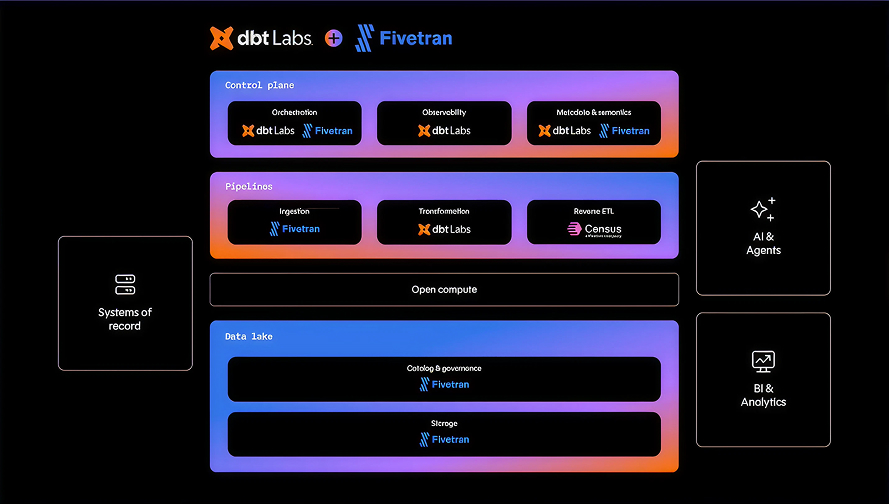
Arpit Choudhury, the founder of Astorik and Data Beats, defines data democratization as “the ongoing process of enabling everybody in an organization, irrespective of their technical know-how, to work with data comfortably, to feel confident talking about it, and as a result, make data-informed decisions and build customer experiences powered by data.” We at Select Star agree with this definition. Data democratization is often accomplished through both tools and processes which ensure data quality and reliability, standardizes terminology and data structure, and provide accurate metadata for better discovery.
Why is data democratization important? Data democratization means that everyone who's supposed to have access to the data actually has it and that there are no single limiting processes or functions. When the data is democratized, everyone should be able to use the data at any time to make informed decisions, take calculated bets, and quantify values without barriers to access or understanding. This doesn’t mean that data ownership is not important, in fact, it is more critical than ever to have precise data ownership. By opening up the data repositories to the organization, everyone is empowered to make data-driven decisions as part of their day-to-day work.
However, successful data democratization requires practical data policies and systems to manage/organize an organization's data. Without the proper guidelines, it can lead to misinformation, wasted hours, and increased costs, thereby harming the business rather than helping it.
Data Democratization Takes Work, So Why Change?
In order to achieve data democratization, you will likely need to make changes to teams, processes, and tools, which takes time and resources to get right for the whole organization. The change won’t be easy, your teams will have to acquire new skills, deploy new solutions, and design automation. The danger of getting it wrong could mean even more wasted productivity and delays in implementing strategic differentiation. Or even worse, the possible misuse or corruption of your trusted data. So why are innovative companies taking the risk to democratize their data?
Increase Productivity
A 2022 State of Data Engineering report stated that “69% of participants report spending an average of 6–10 hours per week responding to, managing, and resolving data access issues. That’s 24–40 hours a month, 288–480 hours a year.” Data engineers often spend the majority of their time fielding requests from analytics teams rather than building new solutions for the business. This type of ad-hoc behavior stresses data teams and bulldozes productivity. By creating a single repository and automating processes for ingestion, transformation, and discoverability/governance, data-democratized companies can deliver more data products at an accelerated pace, allowing for stronger strategic differentiation. Increasing productivity also means that companies can better build to the needs of their customers.
When data is democratized, analysts and business teams should be able to navigate to the most reliable, curated data in the model. For instance, companies may have many tables named “customer name” or “Orders,” but which version is the most reliable? Metadata helps ensure that everyone knows the real intent of the data they are looking at. Tagging and documentation ensure that building analytic products doesn’t have to involve guesswork. When data is classified, tagged, and documented correctly, it means that data analytics are more accurate and reliable. This helps bolster and encourage widespread adoption of analytics and data systems, maximizing ROI on analytic project investments.
Promote Better Collaboration
Data analysts often struggle to access the needed data to do their work, often causing bottlenecks and frustration. This is another significant productivity pitfall. Enabling analytics professionals are not only allowed to but encouraged to identify, navigate, and freely use core data assets meaning less time mitigating requests between internal teams. When data is democratized, analytics users can gain clear and instant access to trusted data allowing data scientists and analysts to spend their time on dash-boarding and feature development. With this power comes responsibility. IT teams must configure specific policies and access control to ensure that access can be opened up to data without introducing the risk of analysts accessing data they shouldn’t.
Enabling business and analytics users to understand how each field and column originated, its intent through documentation, and how it has been transformed can give users deeper contextual meaning during their discovery process. This means that everyone working with data can understand the full context of how the teams assembled the data.
Reduce Costs and Consolidate Silos
Many organizations end up with their data in silos, usually as a reflection of their organizational structure. Eliminating data silos and democratizing data allows companies the opportunity to reduce the number of duplicative tables and datasets. Solutions should identify duplicative, depreciated, and erroneous data assets that can be retired, reducing spend and consolidating unnecessary silos. By eliminating duplicative and erroneous data, companies can not only save money but will operate more reliably, ensuring you have a lean but optimal architecture for their needs.
Data discovery can help your team understand which data assets are most used, which are never used, and which need to be tended to. This gives data teams a blueprint for optimizing their architecture that is based on the frequency of queries and frequency of access to the data. This allows companies to sunset data assets reliably, understanding the full level of dependencies of those data assets.
Data Discovery and Data Democratization
A key step in democratizing data is opening up access to common and curated datasets and analyses for everyone to use. Data Discovery platforms make it easy for everyone to understand all the necessary context about data and be the single source of truth of data regardless of where it lives. The following are key aspects that need to be provided by a data discovery solution:
Popularity and Usage Metrics
In the data discovery process, understanding the most popular and used datasets will ensure users do not navigate to incorrect or outdated data representations.

Data Lineage
As data is used more broadly and freely, understanding and tracking data lineage becomes increasingly important so data teams can better remediate unexpected changes.

Metadata Tagging
Tags help when curating data assets to make it easier for users to discover the right data in the business domain context. Data assets and documentation can be tagged on both system information and business roles.

Access Control
Creating a democratized data environment requires managed access control policies. This ensures teams only have access to the data they should be viewing and mitigates risks of breaking regulatory compliance. Access to all data should be logged for use in future audits.

Select Star Helps Companies Democratize Their Data
Data democratization empowers stakeholders on this mission to use the organization's data easily, reliably, and securely. When the data is democratized, everyone is empowered to use data for better decision-making in their day-to-day work without much hassle
Select Star helps companies democratize data by providing a single source of truth for company data, by providing an automated data discovery system across all the company's data platforms and business intelligence tools. This creates a unified view of the data model at the column level. The platform's powerful search leverages popularity and usage data to surface the most meaningful data assets and their relationships, including lineage, popularity, and top users.
Want to learn more about using data discovery and how you can power your data democratization journey? Book a time to speak with our team.









